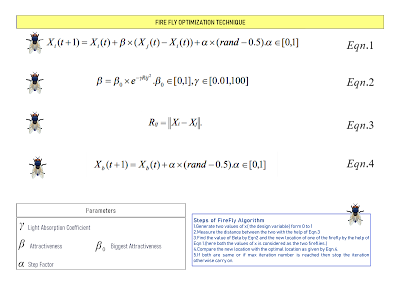Risk Minimization of Wetlands from Climatic Vulnerabilities by Firefly and Glowworm Optimization Techniques
Definition and a brief explanation of the Fire Fly Algorithm
The Fire Fly Algorithm (FFA) is a nature-inspired metaheuristic optimization algorithm that is based on the behavior of fireflies. It was first introduced by Xin-She Yang in 2008. Similar to other swarm intelligence algorithms, FFA imitates the collective behavior of fireflies to solve complex optimization problems. Fireflies communicate with each other through the emission of light, which is used to attract mates or find food sources. In FFA, this behavior is translated into a mathematical model where
Overview of its applications in optimization problems
FFA has been successfully applied to various optimization problems, including but not limited to, engineering design, image processing, data clustering, and economic modeling. It has shown promising results in finding optimal solutions for these problems by efficiently exploring the search space and exploiting the collective intelligence of the swarm. Additionally, FFA's ability to handle multimodal and non-linear optimization problems makes it a versatile algorithm in various domains.
Importance and relevance of studying the Fire Fly Algorithm
The importance and relevance of studying the Fire Fly Algorithm lie in its potential to provide innovative solutions to complex optimization problems. By understanding the underlying principles and mechanisms of FFA, researchers can further enhance its performance and adapt it to new domains. Moreover, studying FFA can also inspire the development of new algorithms that mimic the collective behavior of fireflies, leading to advancements in swarm intelligence and optimization techniques.
Vulnerability and Risk of Wetlands
The vulnerability and risk of wetlands are crucial factors to consider in environmental management and conservation efforts. By studying the vulnerability of wetlands, researchers can identify the potential threats they face, such as climate change, pollution, and habitat loss. Understanding these risks allows for the development of effective strategies to mitigate them and protect these valuable ecosystems. Additionally, studying the vulnerability and risk of wetlands can contribute to our understanding of their ecological importance and their role in providing essential ecosystem services, such as water purification and flood control. By identifying the specific vulnerabilities of wetlands, conservation efforts can be targeted toward the most at-risk areas, ensuring that limited resources are utilized effectively. Furthermore, understanding the vulnerability of wetlands can facilitate the implementation of proactive measures to prevent and minimize potential damage, rather than solely relying on reactive and costly restoration efforts. In conclusion, studying the vulnerability and risk of wetlands is crucial for successful environmental management and conservation, as it enables the development of informed strategies to protect these critical ecosystems.
Click here to read the complete article.
Subscribe to this blog Publish your book with EIS Publishers Instructor of Self Paced Course on Six-week course on Introduction to Remote Sensing and GIS Sponsored by Ashwagandha and Other Products for Enhancing Immunity.. Nutrilite(Use 13238584 as ABO ID) Procure Hydrology Themed T-Shirts from Innovate S Returns from commissions donated to NGOs after deducting the cost of honorarium and maintenance.

Comments